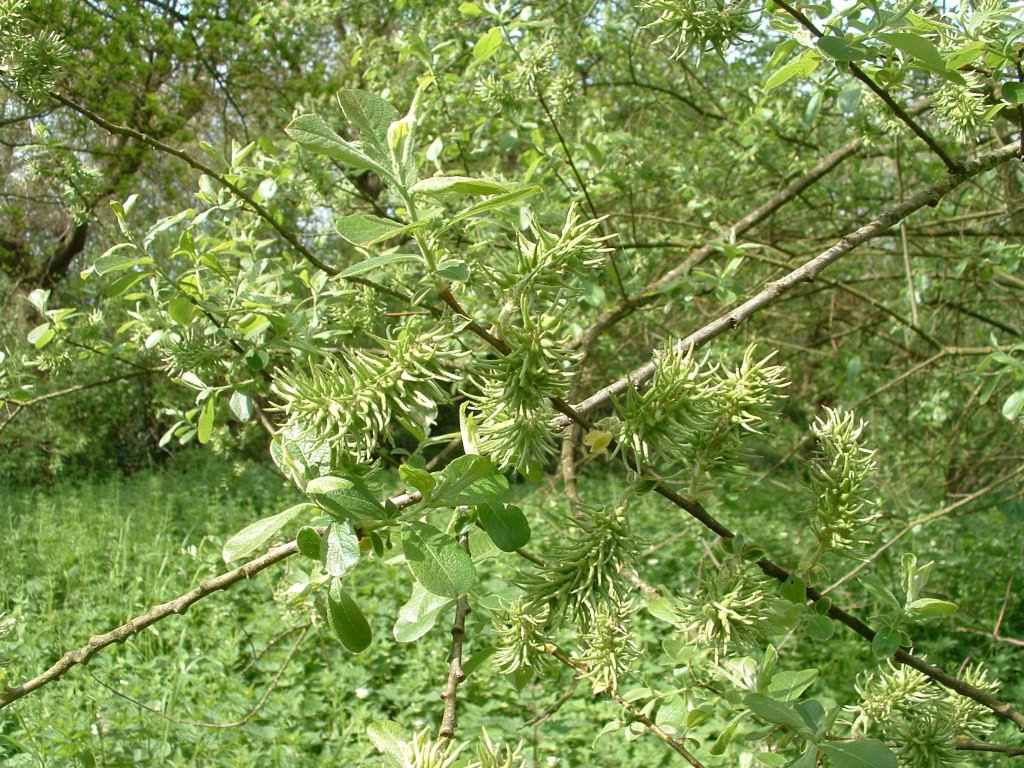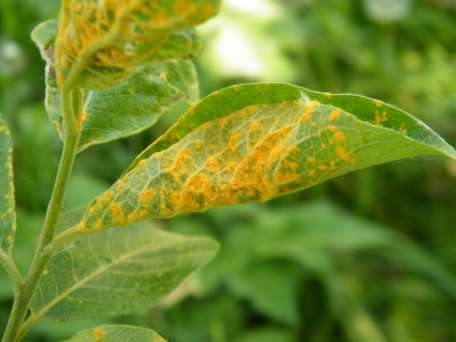
Photos ©2006–

Click any photo for a larger image

Willow Rust - Melampsora spp.

Photos ©2006–

Click any photo for a larger image

Willow Rust - Melampsora spp.
Goat Willow - Salix caprea ssp. caprea. Family - Saliceceae
Also known as -
Great Sallow, Pussy Willow, Palm Willow, Black Sally
A native of the British Isles and a very familiar willow of the countryside, Goat Willow will grow almost anywhere preferring damp areas, ditches, wet woodland, reed beds, scrub, hedges and urban wasteland, attaining a height of between 5–10m (16–32ft) as bushes or small trees. Dull green glossy un–toothed alternate leaves with a "leathery" look above, are grey underneath finely hairy and strongly veined below, 5–12cm (2–4.5in) long and around 3–8cm (1.2–3in) wide tapering to a short stalk, broader than most other Willows which are usually much longer than broad. The flowers are down–like 3–7cm (1.2–2.7in) long catkins appearing in early spring. Goat Willow can easily be confused with the Grey Willow – Salix cinerea which has smaller longer thinner leaves. Salicilin and Tannin can be extracted from Goat Willow bark, Salicilin is closely related in Aspirin, metabolising to Salicylic acid.
It is not considered a good source of timber or firewood as it is a very brittle wood and known to crackle and spit violently if burned, but it has been used in the past for clothes pegs, rake teeth, tool handles etc. Supposedly its common name refers to its spring foliage being a favoured forage item of goats. The catkins are an important source of nectar for early–flying insects and the leaves are a food source for the Common Quaker, Sallow Kitten and Puss moths caterpillars. Male and female flowers are 2–3cm (0.8–1.2in) long catkins which appear before the leaves on separate trees (dioecious) in March or April and are erect on the stem. The oval male catkins are densely hairy with blackish scales and a mass of bright yellow anthers, female catkins are longer, greener and more slender.
Goat Willow can suffer from quite spectacular rust infections caused by several species of Tree Rust – Melampsora spp. where dusty orange spots or pustules appear on the undersides of the leaves. Severe attacks can leave the leaf virtually covered in pustules, and can be occasionally intermingled with black ones. Rust fungi are biotrophs and as they cannot survive on dead plant material, they must either alternate with a different perennial host including Euonymus (Spindle Tree), Larix (Larch), Ribes (Gooseberry), Saxifraga, or produce resting spores. Tree rusts can also affect Poplar, Willow, Birch and Plum species.
The common name of "Pussy Willow" comes from the initial emergence of the male catkins of several Willow species as they are covered in a fine greyish coloured fuzz that is likened to that of small cats or kittens, colloquially known as "pussies". These can be one of the earliest spring signs as they appear long before the leaves.
Site design ©1999– Brickfields Country Park - Privacy -